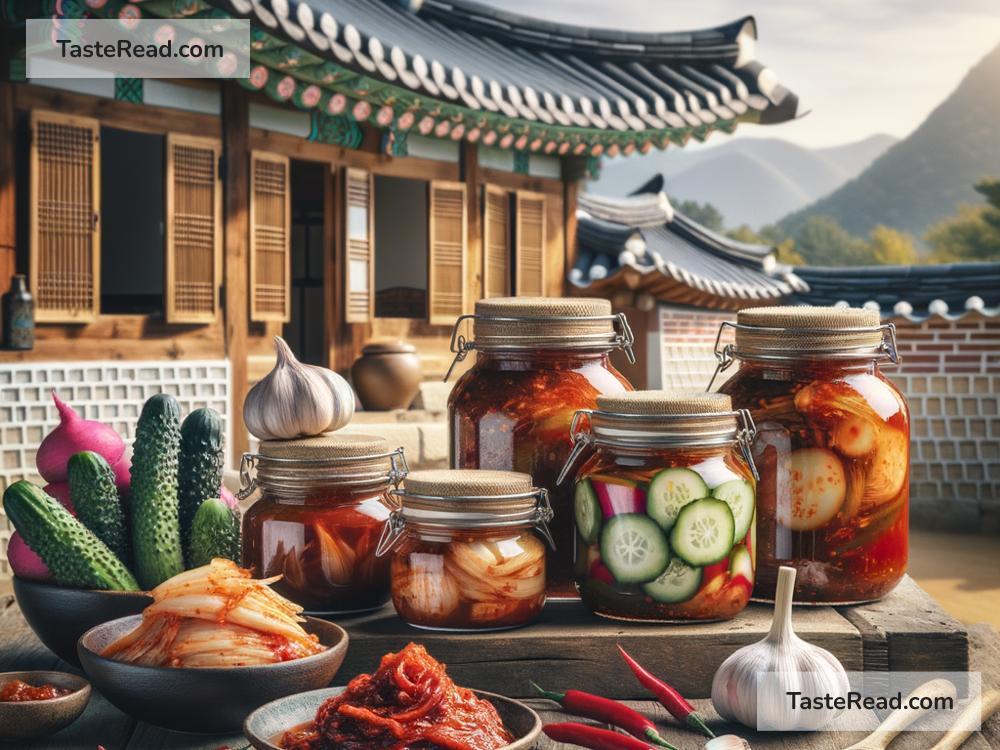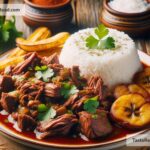Discovering Time-Honored Pickling Traditions in South Korea
South Korea is a country full of vibrant culture, breathtaking landscapes, and mouthwatering food. When people think about Korean cuisine, kimchi often comes to mind. Kimchi is one of Korea’s most famous and beloved dishes, known for its bold taste and many health benefits. But did you know that pickling food in Korea is more than just making kimchi? It’s a centuries-old tradition that connects people to their history, seasonal cycles, and family roots.
Let’s dive into the fascinating tradition of pickling in South Korea and explore how it brings people together through flavor, tradition, and community.
What Is Pickling?
Pickling is a way to preserve food, using ingredients like salt, vinegar, spices, or fermentation to prevent it from spoiling. It has been practiced for thousands of years around the world, especially in places where fresh food wasn’t always available. In Korea, pickling involves the art of fermentation, which enhances the taste of food and even improves its nutritional value. This method allows Koreans to enjoy vegetables like cabbage, radish, and cucumbers all year long—even during the cold winter months when fresh produce is scarce.
The Heart of Korean Pickling: Kimchi
Kimchi is undoubtedly the star of Korean pickling. It’s made by fermenting vegetables, most commonly Napa cabbage or Korean radish, with spices, chili powder, garlic, ginger, and fish sauce. Each family in Korea has its own special recipe for kimchi, passed down through generations. Some like it spicy, while others prefer a milder taste. Depending on where you are in Korea, regional variations may include added ingredients like oysters or other seafood.
Kimchi is not just a side dish; it’s an important part of meals in Korea. It complements rice, soups, and even meat dishes. Koreans eat kimchi almost every day, and it’s considered a superfood because it’s rich in vitamins, probiotics, and antioxidants. Many Koreans believe that kimchi is one of the secrets to their country’s healthy lifestyle.
Other Delicious Korean Pickles
While kimchi steals the spotlight, South Korea has many other pickled foods to offer. Pickled vegetables such as garlic (maneul-jangajji), cucumbers (oi-jangajji), and perilla leaves (kkaetnip-jangajji) are also common. These pickles are soaked in soy sauce, vinegar, or salted water to create unique flavors.
For example, kkaetnip-jangajji is popular because of its bold, earthy taste. Perilla leaves are layered with soy sauce, garlic, chili, and sesame oil before they are left to marinate. The result is a savory and aromatic pickle that pairs perfectly with steamed rice.
Pickled seafood is another part of Korea’s pickling tradition. Salted shrimp (saeujeot) and fermented fish (jeotgal) are often used as condiments or as key ingredients in making kimchi. These pickled foods add a deeper, umami-rich flavor to dishes and are especially loved by people who enjoy strong, salty tastes.
Seasonal Pickling Tradition: Kimjang
One of Korea’s most cherished food traditions is kimjang, the communal practice of making kimchi in preparation for the winter months. Kimjang typically takes place in late autumn, when vegetables like cabbage and radish are harvested. Families, friends, and neighbors gather together to make large amounts of kimchi that can last through the cold season.
Kimjang is more than just a cooking activity—it’s a celebration of community and teamwork. Everyone chips in, whether by washing and cutting vegetables, mixing the spices, or packing the kimchi into jars. It’s a lively and joyful event filled with stories, laughter, and the sharing of techniques and recipes. At the end of the day, people take home their share of kimchi to enjoy with their families.
In fact, the tradition of kimjang is so special that UNESCO recognized it as part of Korea’s intangible cultural heritage in 2013. This highlights how deeply rooted kimjang is in Korean history and culture.
Pickling and Korean Culture
Pickling is not just about preserving food—it’s an expression of Korea’s cultural values. These include sharing, hospitality, and family. Recipes for pickled foods are passed down from one generation to another, connecting people to their ancestors and heritage. Making and enjoying pickled foods together strengthens bonds in families and communities.
Pickling also reflects Korea’s connection to nature and the changing seasons. By preserving vegetables and seafood, Koreans can respect seasonal rhythms while ensuring that no food goes to waste.
Experience Korean Pickling Today
If you’re interested in Korean pickling traditions, there’s no better way to learn than to try making kimchi yourself. Many online tutorials and cooking classes can guide you through the process, even if you’re new to fermenting food. You can also explore Korean markets in your area to find pickled foods like jangajji and jeotgal.
For those traveling to South Korea, consider visiting museums dedicated to kimchi or participating in kimjang events in local communities. It’s a hands-on way to experience the heart and soul of Korean pickling traditions.
Conclusion
Discovering Korea’s time-honored pickling traditions is more than just learning about food preservation—it’s exploring a way of life that values family, community, and respect for nature. Whether you’re enjoying spicy kimchi, savoring soy-pickled vegetables, or witnessing the magic of kimjang, you’ll gain a deeper appreciation for Korean culture and cuisine.
Next time you sit down to eat a Korean dish, remember that every bite carries centuries of tradition. Pickling isn’t just about the bold flavors—it’s also about honoring the past and celebrating the present.


